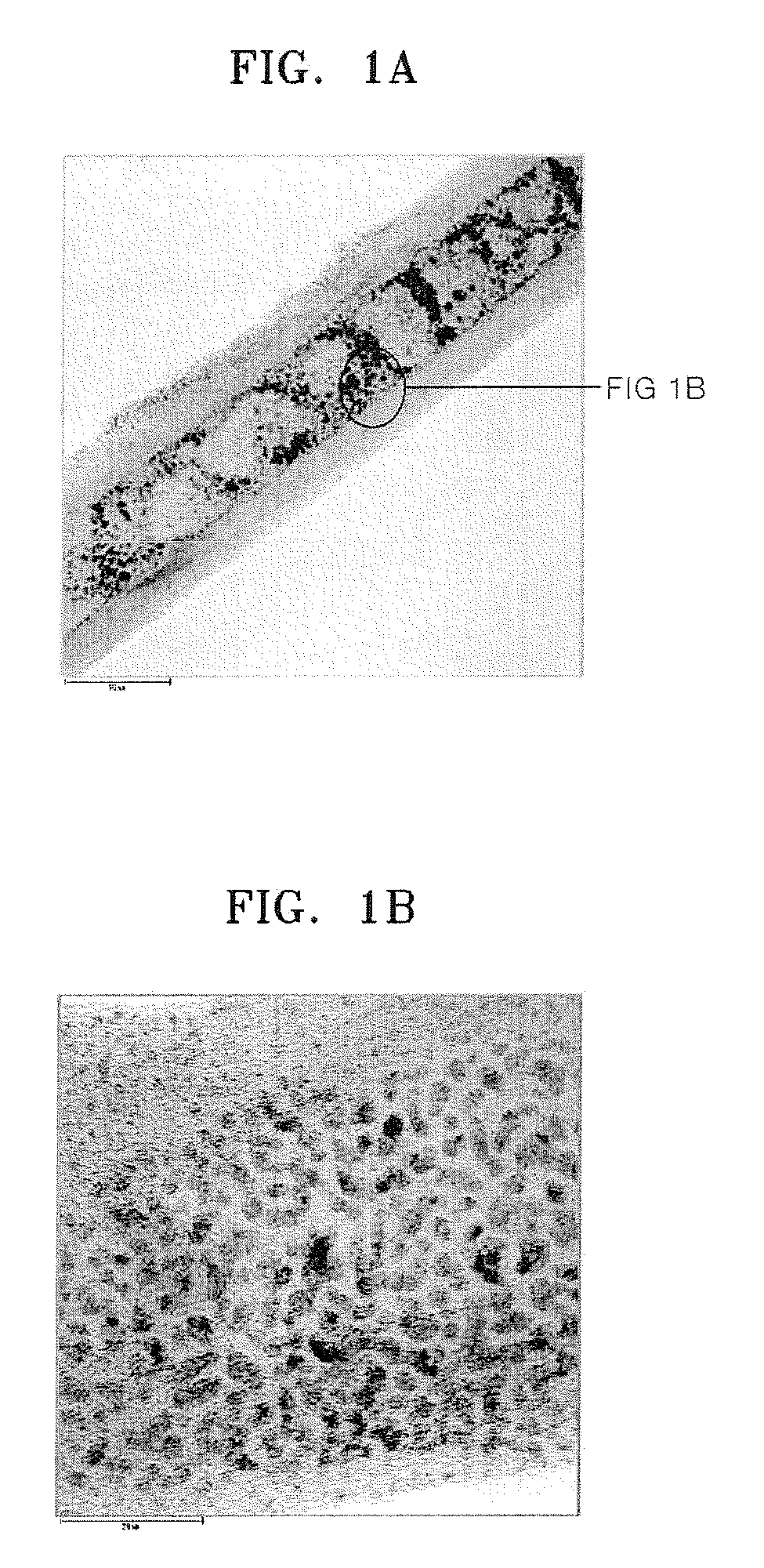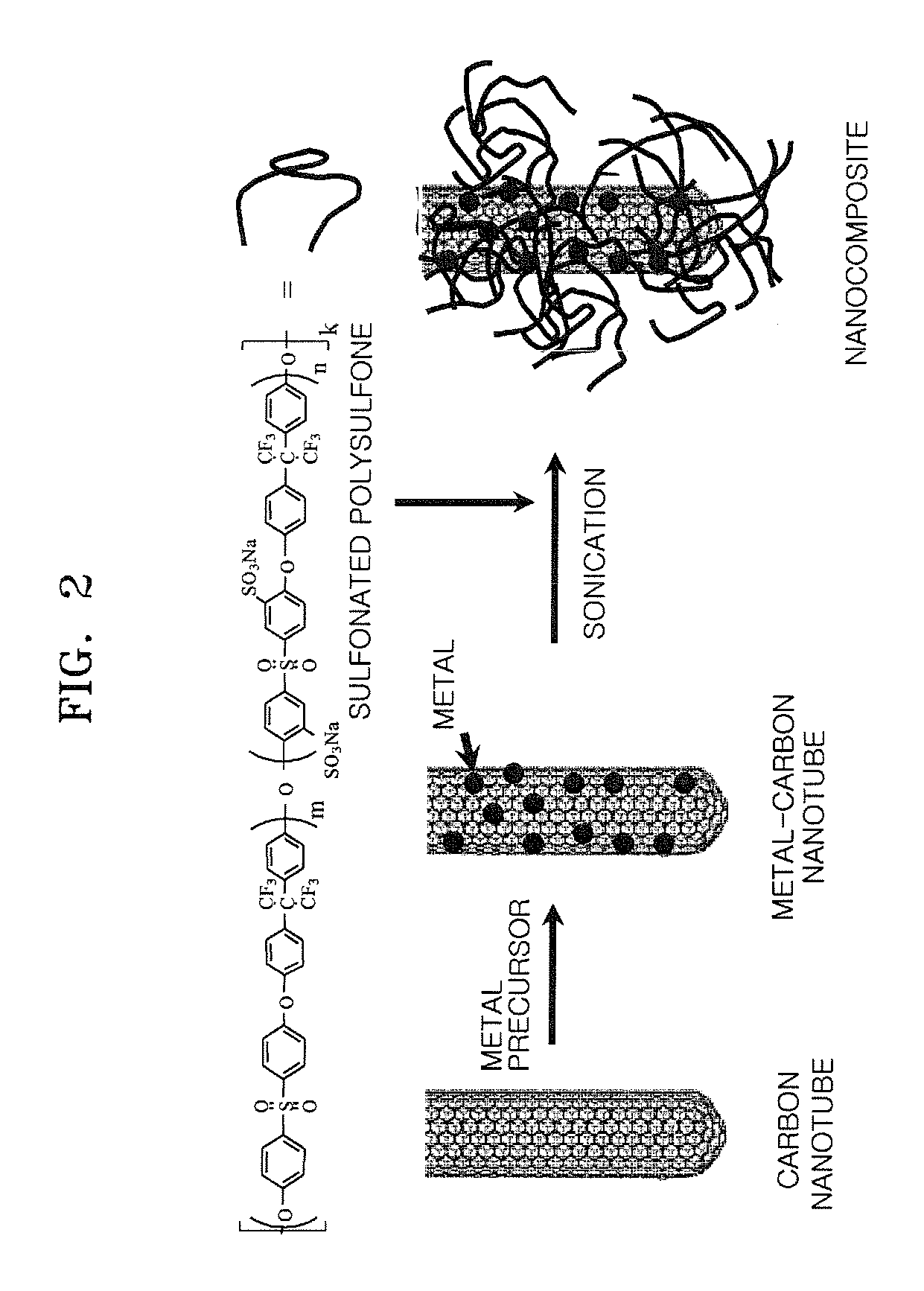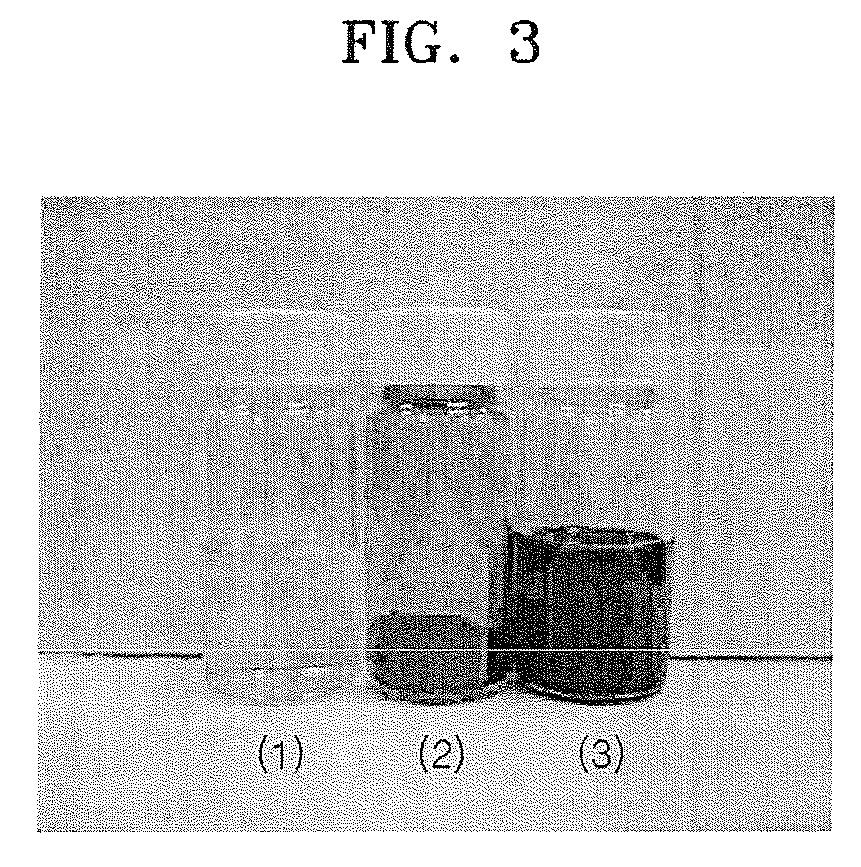Nanocomposite, nanocomposite electrolyte membrane including the same and fuel cell including the nanocomposite electrolyte membrane
- Summary
- Abstract
- Description
- Claims
- Application Information
AI Technical Summary
Benefits of technology
Problems solved by technology
Method used
Image
Examples
synthesis example 1
Preparation of Sulfonated Polysulfone
[0093]0.09792 moles of sulfated-4, 4′dichlorodiphenyl sulfone (S-DCDPS), 0.10608 moles of 4,4′dichlorodiphenyl sulfone (DCDPS), 0.204 moles of 4,4′-(hexafluoroisopropylidene)diphenol (HFIPDP), and 0.204 moles of potassium carbonate were added to a mixed solution of 120 ml of N-methyl-2-pyrrolidone (NMP) and 100 ml of toluene. The mixture was refluxed at 160° C. for 12 hours, and generated water was removed using a Dean-Stark apparatus. When the water was fully removed, the toluene was removed through a valve. Then the temperature of the reacted mixture was raised to 180° C. over 2 hours and a polymerization reaction was performed for 4 hours.
[0094]As the polymerization progressed, the viscosity of the solution was raised. After completion of the polymerization, the polymerized solution was cooled down to room temperature and then poured into triple distilled water (1000 ml) to obtain a precipitate. The resultant precipitate was washed 3 times and...
synthesis example 2
Preparation of Sulfonated Polysulfone
[0095]0.105 moles of S-DCDPS, 0.95 moles of DCDPS, 0.204 moles of HFIPDP, and 0.2448 moles of potassium carbonate were added to a mixed solution of 120 ml of NMP and 100 ml of toluene. The mixture was refluxed at 160° C. for 12 hours, and generated water was removed using a Dean-Stark apparatus. When the water was fully removed, the toluene was removed through a valve. Then the temperature of the reacted mixture was raised to 180° C. over 2 hours and a polymerization reaction was performed for 4 hours.
[0096]As the polymerization progressed, the viscosity of the solution increased. After completion of the polymerization, the polymerized solution was cooled down to room temperature and then poured into triple distilled water (1000 ml) to obtain a precipitate. The resultant precipitate was washed 3 times and dried to obtain a sulfonated polysulfone having a sulfonation degree of 52%.
synthesis example 3
Preparation of Ptru-Carbon Nanotube
[0097]0.0915 g of H2PtCl6, which is a Pt precursor, and 0.0475 g of RuCl3, which is an Ru precursor were completely dissolved in 1.5 ml of acetone to prepare a precursor mixed solution. 0.5 g of carbon nanotubes were put into a zipper bag, the precursor mixed solution was added to the zipper bag, and then the carbon nanotubes and the precursor mixed solution were completely mixed. While the zipper bag was left open, the resultant mixture was dried in a hood for 4 hours. The resultant sample was then placed in a melting pot and dried at 60° C. in an oven overnight.
[0098]The dried sample was placed in a furnace, heated at a rate of 0.6° C. / minute to a temperature of 250° C. under a hydrogen atmosphere, and then maintained at the same temperature for 2 hours more to be reduced. In the furnace, hydrogen was substituted with nitrogen, and then the resultant was heated at a rate of 5° C. / minute to a temperature of 350° C. and maintained at the same tempe...
PUM
| Property | Measurement | Unit |
|---|---|---|
| Fraction | aaaaa | aaaaa |
| Percent by mass | aaaaa | aaaaa |
| Percent by mass | aaaaa | aaaaa |
Abstract
Description
Claims
Application Information
 Login to View More
Login to View More - R&D
- Intellectual Property
- Life Sciences
- Materials
- Tech Scout
- Unparalleled Data Quality
- Higher Quality Content
- 60% Fewer Hallucinations
Browse by: Latest US Patents, China's latest patents, Technical Efficacy Thesaurus, Application Domain, Technology Topic, Popular Technical Reports.
© 2025 PatSnap. All rights reserved.Legal|Privacy policy|Modern Slavery Act Transparency Statement|Sitemap|About US| Contact US: help@patsnap.com



